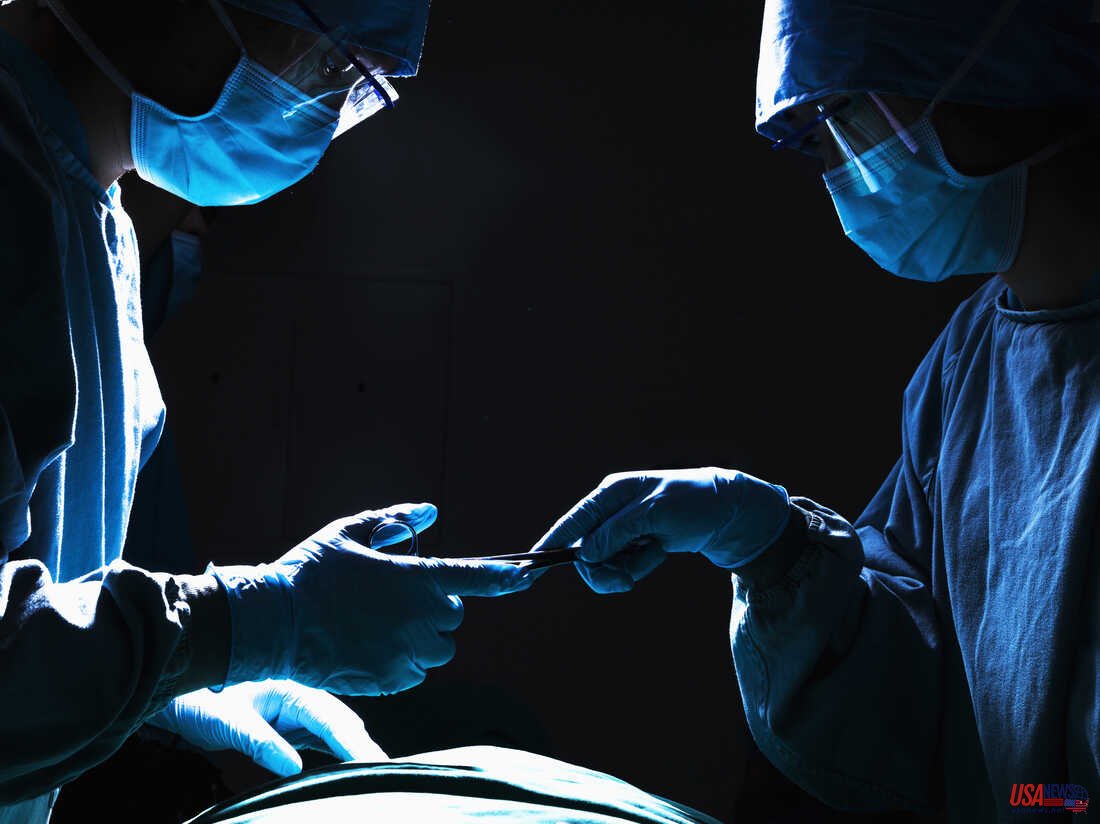Jay Wellons, a pediatric neurosurgeon, often feels the joy of saving a child from almost certain death aEUR" and sometimes also the pain of not being able to stop it. He has performed spine surgery on in-utero fetuses to correct spina Bifida.
Wellons explains that the spine can vary in size depending on how big the fetus is. We use our magnifying lenses, surgical loupes. Then we put on a headlight so we can see what's going on.
Wellons, a south Mississippi native, said he never intended to be a pediatrician. He envisioned himself as a small town family medicine doctor who could "occasionally get paid with tomatoes and chickens" when he entered medical school. He was changed by a gross anatomy lab, where he learned more about the spine and nerves of his brachial plexus.
"I can recall spending hours deconstructing that and being completely enthralled by it. It was almost like macramA(c)," Wellons said. "That was when I realized I could be changing from a rewarding career in family medicine to a completely different one.
In his memoir, All That Moves Us, Wellons shares his childhood experiences as a pediatrician. He claims he keeps a large book of photos and mementos that his patients have given him, which he uses whenever he feels like being lifted or grounded.
He says, "I will always pull out that file and just flip through and think, 'This why we do what do.'" It's late at night. It takes a lot of time for both the residents and us out in the field. However, that level of gratitude aEUR" I mean I have experienced it as a patient. It was something I experienced as a parent and a surgeon.
How Roe v. Wade's decision to be overturned will affect patients whose babies have neurological defects
This is a story I'll tell about my niece. After being pregnant for a few months, my niece called me to tell me that they had just done their 13-week ultrasound. They said that there was a brain problem and that she needed to see Uncle Jay. We get her to the fetal clinic and do the ultrasound. They are right there the entire time. It's giant. The entire brain is located on the outside of your skull, and it's almost inverted. It's now at the mercy amniotic fluid. This is the caustic fluid that becomes more caustic with time. Fetal surgery for spina biifida is a good option.
In that situation, you have the option of having a child who is born but in constant pain and who has no ability to interact with the world. They are in a wheelchair. This is the kind that keeps your neck still. They receive G-tube feedings, and they don't grow up much from their time as babies. They grow up to be adults with the right level of care. We've discussed termination with other patients in similar situations before. That's what we did with my niece. ...
These children will be more common than ever. As a society we must accept that these children are our responsibility. This is our job.
In-utero surgery performed to correct spina bifurca on a fetus
After her mom is admitted to the operating room, she falls asleep, and lines are placed on her stomach. Then there's the entire MFM team, which is the maternal fetal medicine (MFM) team. ... The belly is prepared, incisions are made and the uterus is revealed. It looks like a soccer ball made of orange-pink. The team will then ultrasound the dome of your uterus and find a suitable place to open it. Once the incision is made, the team will expose the inside of your uterus which is where you can see the fetus. So, suddenly, around 20 to 22 weeks later, we are down there looking at the little back that has been rotated. This is where we repair the back and reduce the potential long-term complications that spina bifida can cause.
Being a parent and handling the death of his patient
You have to decouple actively when you are in the middle of something, especially if you have children or you are a pediatric neurosurgeon. It's almost as if I imagine myself pushing a clutch to disengage this gear. It's not easy. ...
[I] have this kind of place that I go that is just outside my vision. It's a beautiful green field that makes me think about. I can recall the experiences and memories of these patients and can see myself putting them into a box. It's not that I forget these children. It's only that they are in a safe place. It's something that surgeons who deal with life and death feel.
His patients' families must be communicated clearly
You can pull the punch no matter how much you want, but it is still your responsibility to ensure that they understand and know what you are saying. You don't have to deliver it without compassion. "Your daughter is very sick, and we must get her to the hospital right away," you might say. To some degree, it is essential to make sure they understand the situation, to ensure they know what the plan is, to make sure they know the risks, and to then tell them what we are going to do. It's important to be there for them after surgery, talking to them and making rounds in the ICU.
Assault weapons as a public issue
Some of the most severe injuries I have seen from gunshot wounds are not limited to assault weapons. However, I have seen injuries to the brain as well as the spinal cord that left a girl paralyzed and quadriplegic and on a ventilator. This is part of a society with guns. Today, we can see that these assault weapons do so much damage. Jon Martin is my friend and chief of pediatric neurosurgery at Connecticut Children's Hospital. After the Newtown [Sandy Hook] massacre, he described how they all got gowned up and waited in the hospital to see the children until they realized that no one was coming since so many people had already died. It is hard to understand why these weapons are needed in society.
This interview was produced by Sam Briger, Seth Kelley and edited for broadcast. It was adapted for the Web by Bridget Bentz and Molly Seavy–Nesper.













